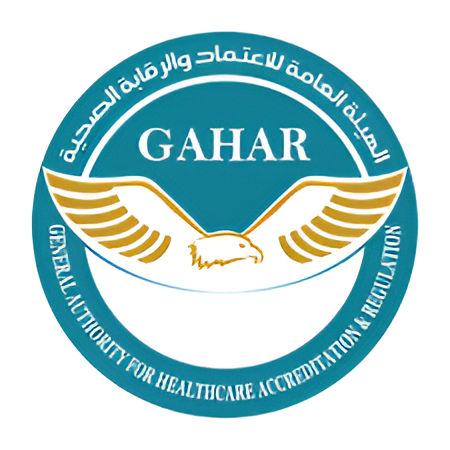 May 22, 2025
May 22, 2025
Heat Stroke
The Earth is experiencing a continuous increase in temperatures, rising by about 1.2 degrees Celsius compared to the late 19th century. The year 2023 has been recorded as the hottest year in history! Thus, it’s essential to be aware of the most dangerous heat-related illnesses, especially heat stroke.
What is Heat Stroke?
Heat stroke, also known as heat exhaustion, is a condition where the body temperature rises to 40 degrees Celsius or higher due to prolonged exposure to direct sunlight without protection, particularly during extreme heatwaves. It is a medical emergency that requires immediate treatment to prevent damage to body organs and potentially fatal complications.
Causes of Heat Stroke
– Engaging in strenuous physical activity in hot weather: Such as doing hard work or exercising outdoors.
– Prolonged exposure to direct sunlight without adequate protection.
– Insufficient water and fluid intake: This can cause dehydration, reducing sweating, which helps lower body temperature.
– Wearing heavy or tight clothing that doesn’t allow good ventilation.
– Certain medications: Diuretics, for example, can alter the body’s ability to regulate its temperature, as can some medical conditions like severe obesity, diabetes, and heart disease.
Symptoms of Heat Stroke
– Severe and persistent headache
– Nausea and vomiting
– Body temperature rising to 40 degrees Celsius or higher
– Dizziness
– Muscle pain
– Severe skin dryness
– Red, hot skin
– Confusion and lack of concentration
– Rapid heartbeat
– Loss of consciousness
Difference Between Heat Exhaustion and Heat Stroke
Heat exhaustion is the loss of a significant amount of fluids and salts due to excessive sweating from prolonged exposure to high temperatures. It is less severe than heat stroke. Many symptoms of heat exhaustion are similar to those of heat stroke, but with heat exhaustion, body temperature usually doesn’t exceed 38 degrees Celsius, and excessive sweating occurs with intense thirst and loss of appetite.
It can usually be managed within 30 minutes by drinking plenty of water and resting in a cool place. However, if the body temperature continues to rise, heat exhaustion can progress to heat stroke, characterized by significantly reduced sweating and a body temperature reaching 40 degrees Celsius or higher.
Complications of Heat Stroke
Heat stroke symptoms can last from 24 to 48 hours, but severe complications can occur without immediate medical intervention:
– Internal organ damage: Prolonged high body temperature can damage brain cells and disrupt brain functions, potentially leading to coma and death. It can also cause liver and heart damage and failure.
– Nervous system problems: Continuous muscle spasms can significantly affect the nervous system.
– Muscle tissue damage: Muscle inflammation and tissue breakdown release contents into the bloodstream, potentially damaging the kidneys.
– Severe dehydration: Significant fluid loss affects the circulatory system’s ability to transport oxygen to body cells.
– Respiratory problems: Lung damage or acute respiratory distress syndrome can occur.
According to a World Health Organization report, approximately 489,000 people died annually from heat-related issues between 2000 and 2019.
High-Risk Groups for Heat Stroke
– Children under 4 years old: Their bodies have a reduced ability to regulate and control their temperature compared to adults.
– Elderly people over 65 years old: Their ability to adapt to heat decreases.
– Athletes: Those who perform strenuous physical activities in high temperatures, especially under direct sunlight, like cyclists or runners.
– People with chronic illnesses: Such as heart disease, severe obesity, diabetes, high blood pressure, and kidney or lung diseases.
– Certain occupations: Jobs requiring prolonged exposure to sunlight or high temperatures, such as construction, agriculture, factory, and mining workers.
– Medication users: Some medications, like those for heart diseases, high blood pressure, diuretics, sedatives, and antidepressants, can cause dehydration.
First Aid and Treatment
Heat stroke requires emergency medical assistance or an immediate call to an ambulance. In the meantime, the following first aid measures can help reduce symptom severity:
– Move the person out of direct sunlight to a well-ventilated and cool place.
– Lower their body temperature by removing unnecessary clothing and applying cold compresses to the head, neck, armpits, and thighs.
– Place the person in a cold-water bath or pour cold water over their body.
Prevention of Heat Stroke
– Keep your body hydrated by regularly drinking enough water.
– Avoid prolonged exposure to direct sunlight, especially during peak heat hours.
– Wear loose, light-colored clothing.
– Use sunscreen to protect your skin from burns.
– Take breaks in the shade during outdoor work or exercise.
– Use an umbrella or hat to shield yourself from the sun.
– Engage in physical activities before 10 AM or after 6 PM.
– Ensure that children or elderly individuals are not left in a closed vehicle for long periods.
– Do not ignore any early symptoms of heat stroke.
Awareness of heat stroke symptoms, causes, and prevention methods significantly helps protect our health and the health of our loved ones from the dangers of its complications during extreme heat periods. If you suspect heat stroke, contact the emergency department of Seychelles Hospital at 19569 for prompt medical care.
